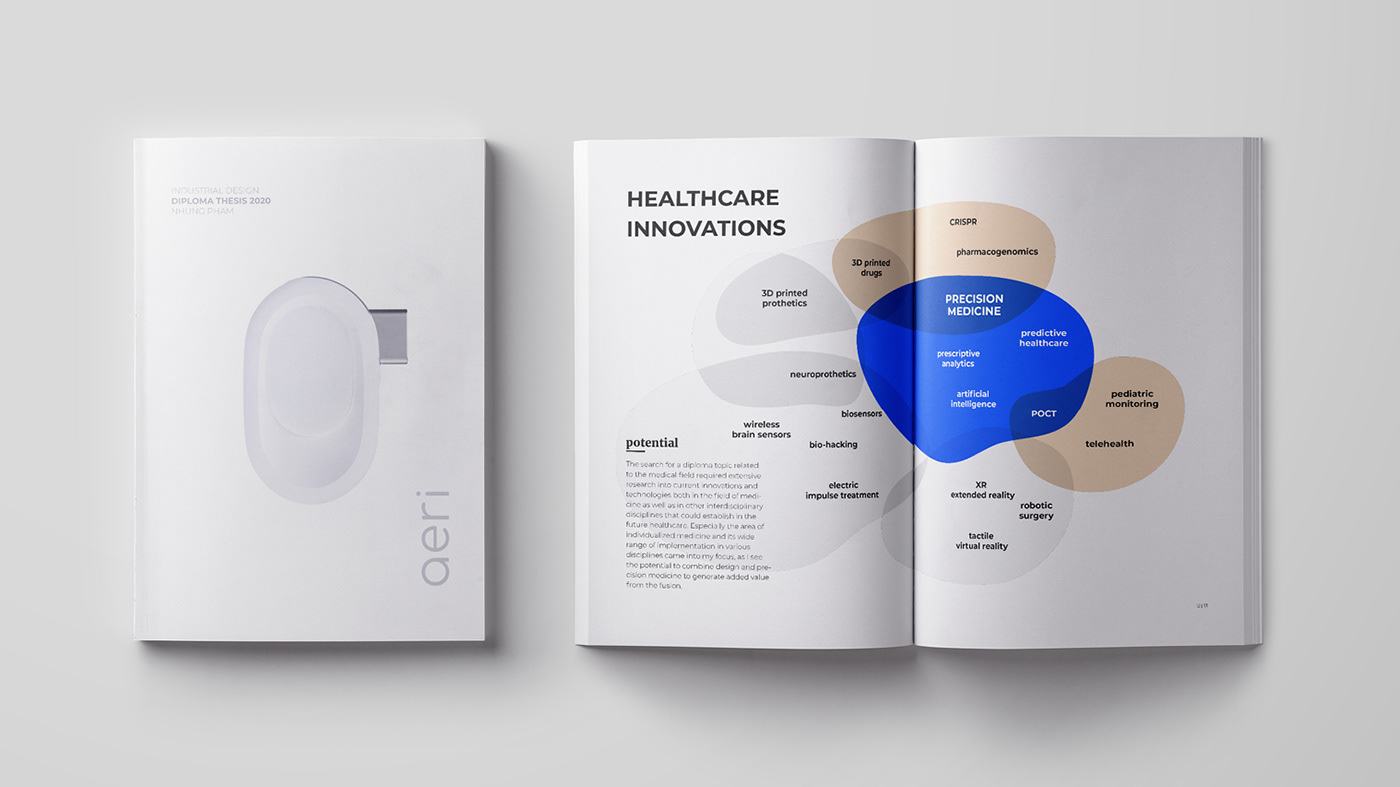aeri
Breath Analysis
monitor your health
Diploma Project 2020 designed by Nhung Pham
Supervision by Prof. Tom Philipps

Motivation
My goal was it to design a medical product or system that focuses on the needs and values of the human being and reinterprets the chosen topic through an innovative approach. The search for a diploma topic related to the medical field required extensive research into current innovations and technologies both in the field of medicine as well as in other interdisciplinary disciplines that could establish in the future of healthcare. Especially the area of individualized medicine and its wide range of implementation in various disciplines came into my focus, as I see the potential to combine design and precision medicine to generate added value from the fusion.
Research
The most common causes or diseases in the world that lead to death are shown in the picture below. It can be seen that four out of ten of the most frequent causes of death are related to the respiratory system (3. / 4. / 6./ 10.) and thus represent a large part of global mortality in relation to the rest. The graphic is based on an evaluation by the WHO in 2016, but it is expected that there will be an increase in respiratory diseases due to air pollution and pandemics, that raise the probability of respiratory infections and chronical diseases, caused by irreversible respiration damage.
Therefore it is necessary to improve the diagnostic methods of respiratory and other diseases. During my research I found out that it is possible to diagnose multiple diseases through our breath. Our exhaled breath represents and tells us a lot about our health, because volatle organic compounds (VOC) and more substances in our breath can work as biomakers for multiple diseases.
Therefore it is necessary to improve the diagnostic methods of respiratory and other diseases. During my research I found out that it is possible to diagnose multiple diseases through our breath. Our exhaled breath represents and tells us a lot about our health, because volatle organic compounds (VOC) and more substances in our breath can work as biomakers for multiple diseases.


Present problems
Most technologies for spectrometry and breath analysis are not designed for commercial purposes, the devices are large, expensive and require a high maintenance effort. As a result, the general population does not receive any benefits and added value from breath analysis technology. Very few studies that carried out breath analysis are difficult to evaluate due to small patient numbers and test groups. Depending on the institutions, the studies are under different conditions so that the data sets are difficult to standardize and collect. The great variance and complexity of the collected data at the moment make the implementation of breath analysis as a possible diagnostic method for health examinations, such as blood drawing, ECG and imaging methods (MRT, CT, US) difficult. This is because clinics and physicians do not have the resources to interpret the recorded data, or the data is often collected and evaluated in a database owned by the manufacturer of the measuring device or by research groups.
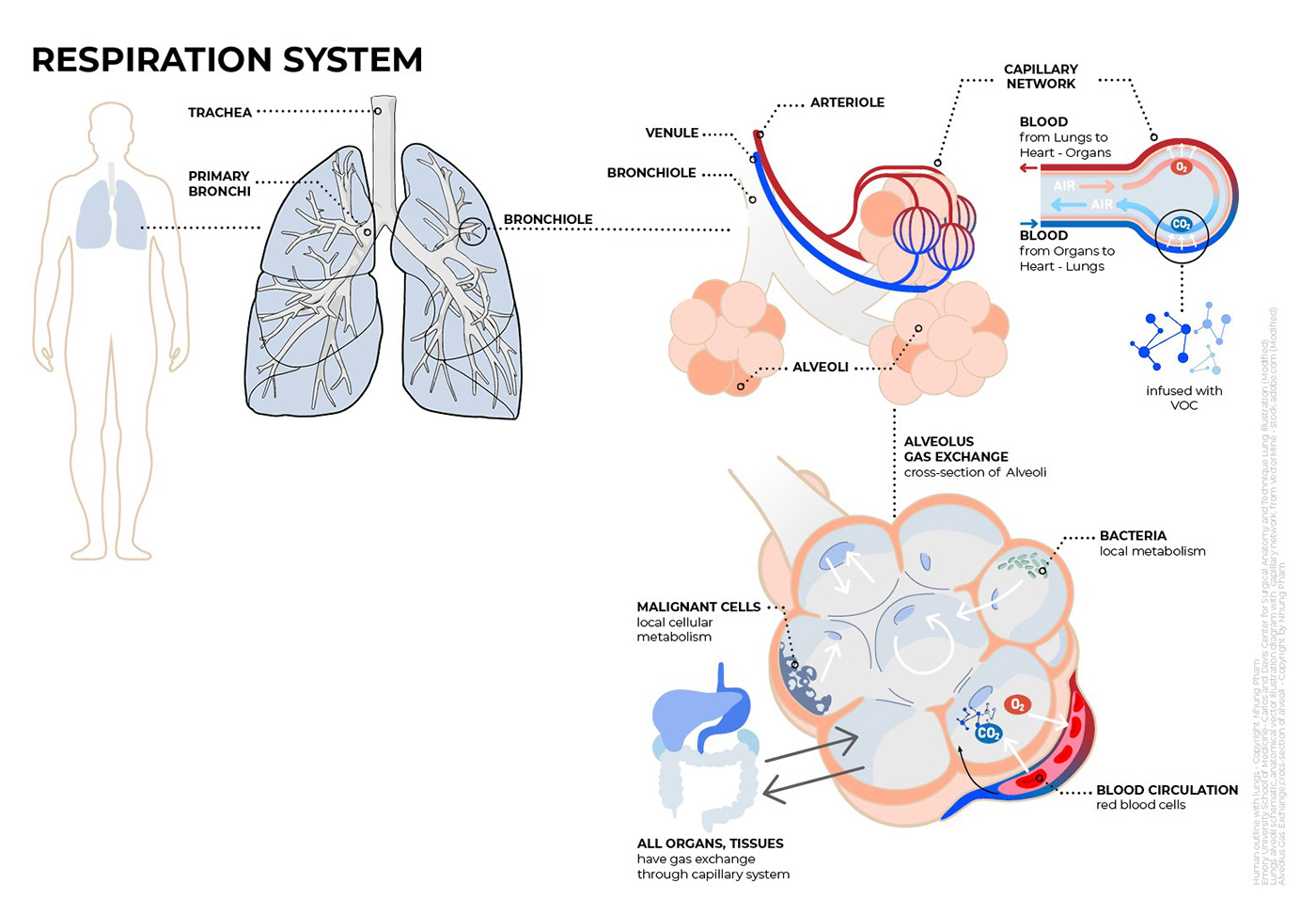
Biological and chemical process
VOC particles in our breath are a source of information about our biological and physical condition. As respiratory biomarkers they are often associated with certain diseases, so that it is possible to diagnose diseases at an early stage, increasinging the chances of a cure by optimizing therapies and medication as early as possible.
Breathomics, refers to the science of metabolism using breath, which provides information about cells, tissues and the microbiome and thus has a wide range and great potential to provide insight into the early stages of diseases. Because every disease is directly related to a change in metabolism, and thus the VOCs as by-products are also affected. Compared to conventional laboratory tests the analyzation of breath has some major benefits. Breath analysis is safe, non-invasive, painless, the samples are easy to collect and have no limitations in quantity, compared to blood.
Concept
A handheld device can be used anywhere. The concept of Aeri as commercial device makes breath analysis a routine screening method for private users and clinics. The standardization of a breath sampler and analyzer makes it possible to learn more about the collected data, developing breath pattern algorithms that can compare existent patterns of patients linked to certain diseases, predicting the chance of future diseases more efficiently. For patients that already have diseases or want to monitor their health Aeri works as self- care and testing device, supporting future telehealth by sharing the status of breath and health with doctors.
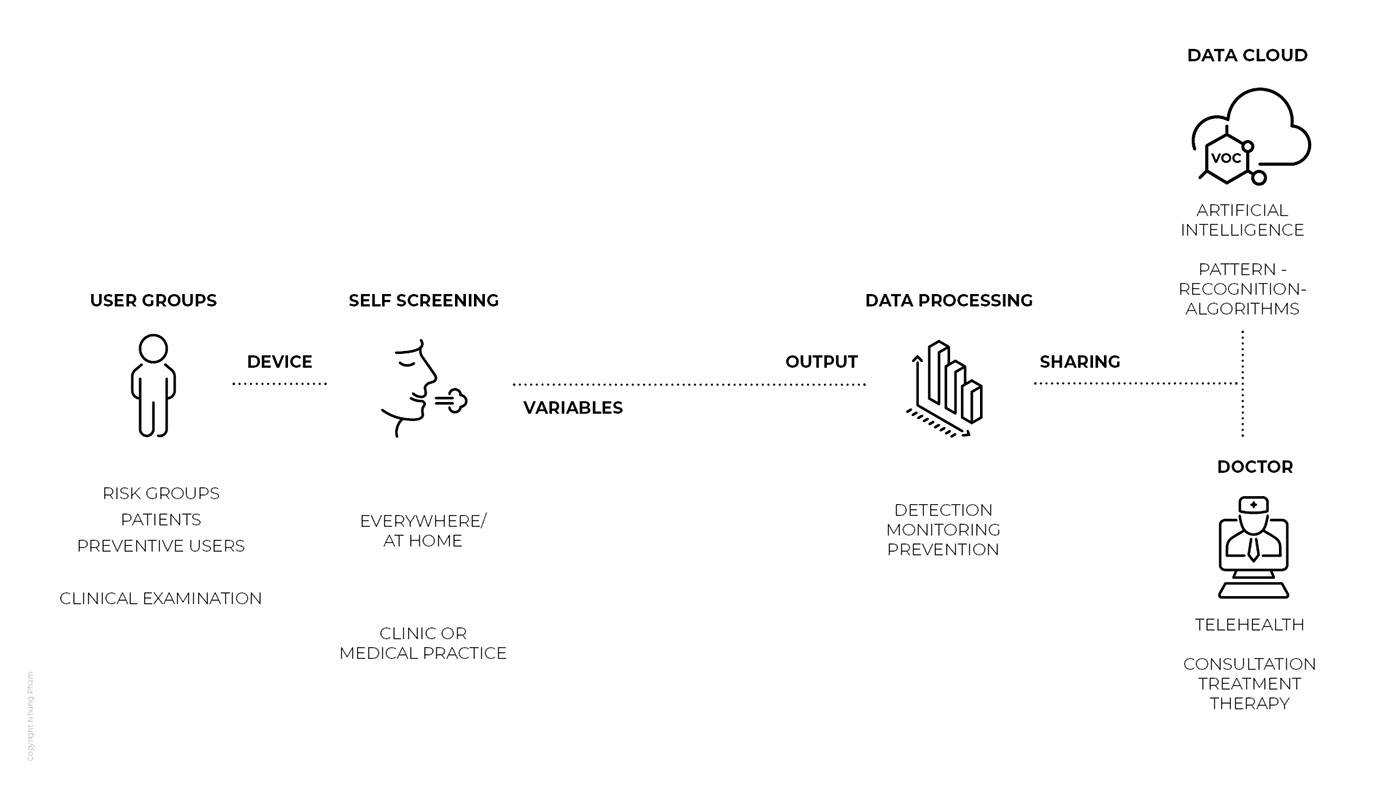
Design
The design process began with many sketches. Trying out different proportions and shapes was an important process to find a direction for the design. As a product that could be used everywhere and by everyone, it was important to test the ergonomics on both adults and children. Inspired by pebbles, the final design was created by testing different shapes on mockups as foam models and 3D prints. The findings were incorporated into the design in numerous iterations, thus optimizing handling and form language.










Technology
Various components inside the device are fixed by screws. The breathing analysis device consists of two shells. While the upper half provides space for the circuit board, the LED display and the battery with inductive charging coil, the lower half contains the transport and filter unit for the exhaled air.
The nano sensors are built into a modular case, that can be exchanged and released from the main device.
The nano sensors are built into a modular case, that can be exchanged and released from the main device.
Material
Since the mouthpiece comes into contact with the human mucosa, it is particularly important to consider biocompatibility when choosing the material. In medical applications, pure titanium is one of the materials that has an extremely high biocompatibility with the human body. Especially in dental technology pure titanium is preferably used as dental prosthesis. Because of its high corrosion resistance and low density, it is very light. Plastic on the other hand is a VOC emitting material, that will worn out after a long time of use and possibly will emit VOCs through abrasion manipulating the output of the breath analysis.


How it works
One breathes out evenly about 10 seconds, depending on breathing rhythm and lung function, through the mouthpiece. In order to keep the breathing air at body temperature and prevent condensation, it is warmed up after passing through the filtering membrane. The filtering membrane is used to select larger molecules that should not be analysed. The chamber after the mouthpiece is heated by a heating unit and transmitters. At the same time, a slight vacuum is created in the module of the nano sensors by the vacuum cells, so that the air passes through the analysing nano module with the chemoresistive sensors, is temporarily stored and is released again when the test is finished. As soon as the exhaled air reaches the sensors, it covers the metal oxide film by condensation on a cooler surface. The evaluation is then carried out by the processors in the module and the processor in the main module.
The haptic engine also enables the reproduction of haptic feedback during use, so that the user can follow an instructive breathing rhythm by receiving minimal impulses.
The haptic engine also enables the reproduction of haptic feedback during use, so that the user can follow an instructive breathing rhythm by receiving minimal impulses.
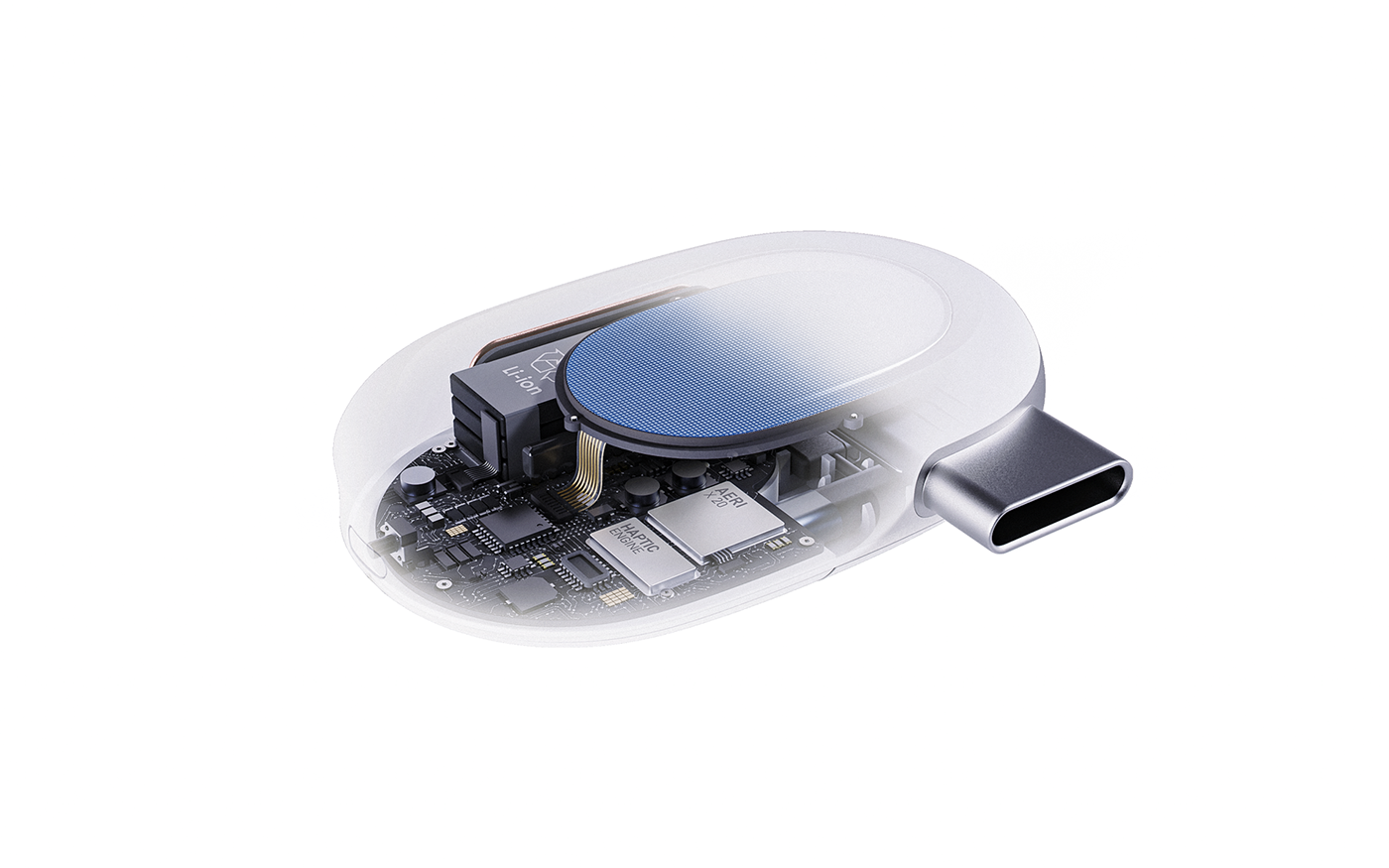
Final
Aeri as a portable breathing analysis device is charged inductively with a small magnetic charging pad at the back of the device. Thus it has no charging connections and is therefore particularly hygienic and easy to clean. A light strip on the back of the charger also indicates the state of battery charge. The connection of Aeri to a smartphone or tablet allows a precise monitoring of the state of health. It is also thinkable to introduce breath analysis as a new parameter to existing health tracking apps. Regular notifications remind the user to perform the analysis.

Nano module
A modular nano module, which can be adapted to the user according to the clinical symptoms and needs, forms a separate closed unit that is docked to the master device. The modularity of the nano unit allows the exchange and switch to specific sensor-
constellations or updating to improved sensors in the future.
constellations or updating to improved sensors in the future.
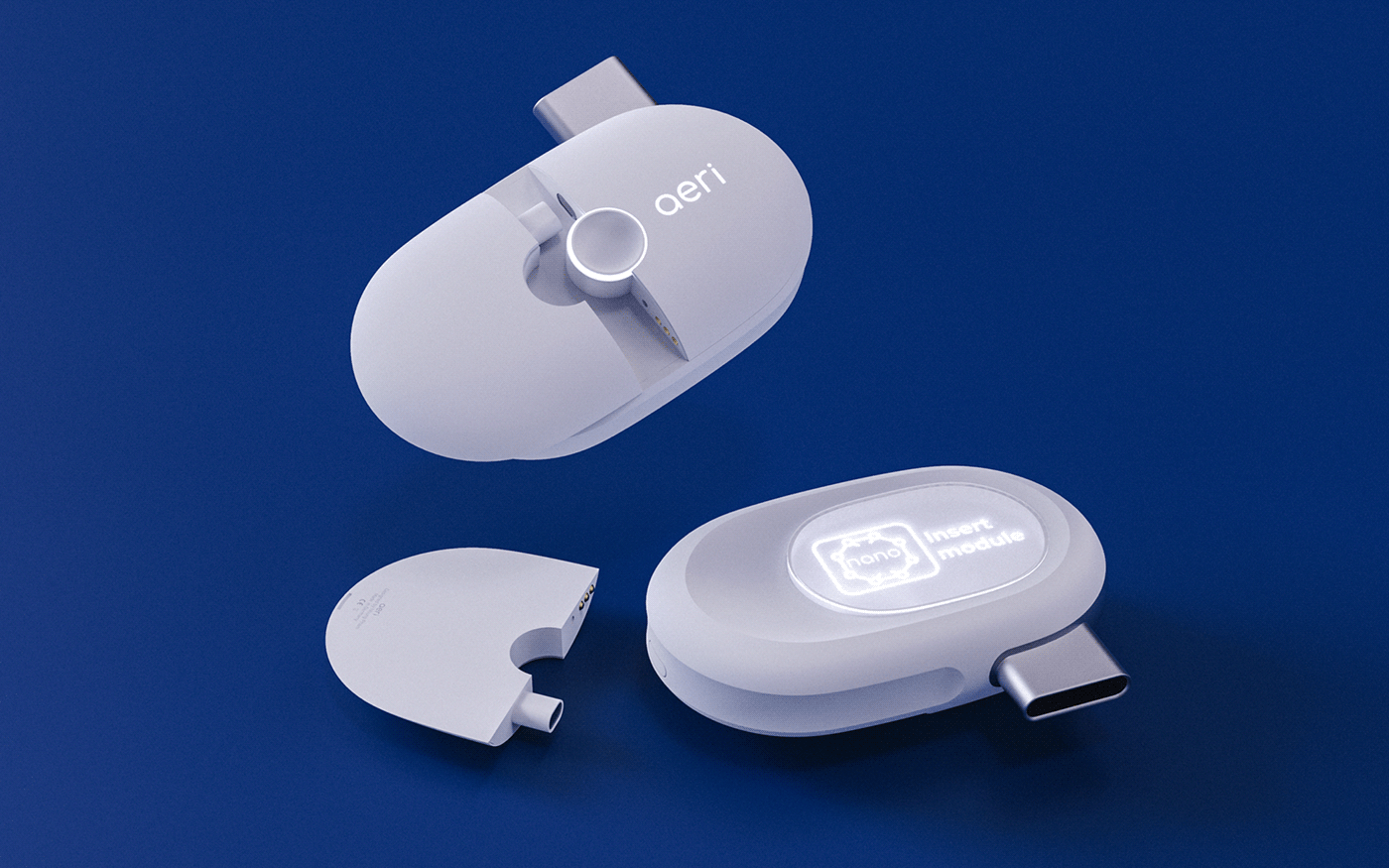
Interface
Simple interfaces with clear commands on the LED display should make the use of the system attractive for all age groups. The display has the same colour tone as the housing and is backlit by white LED pixels.
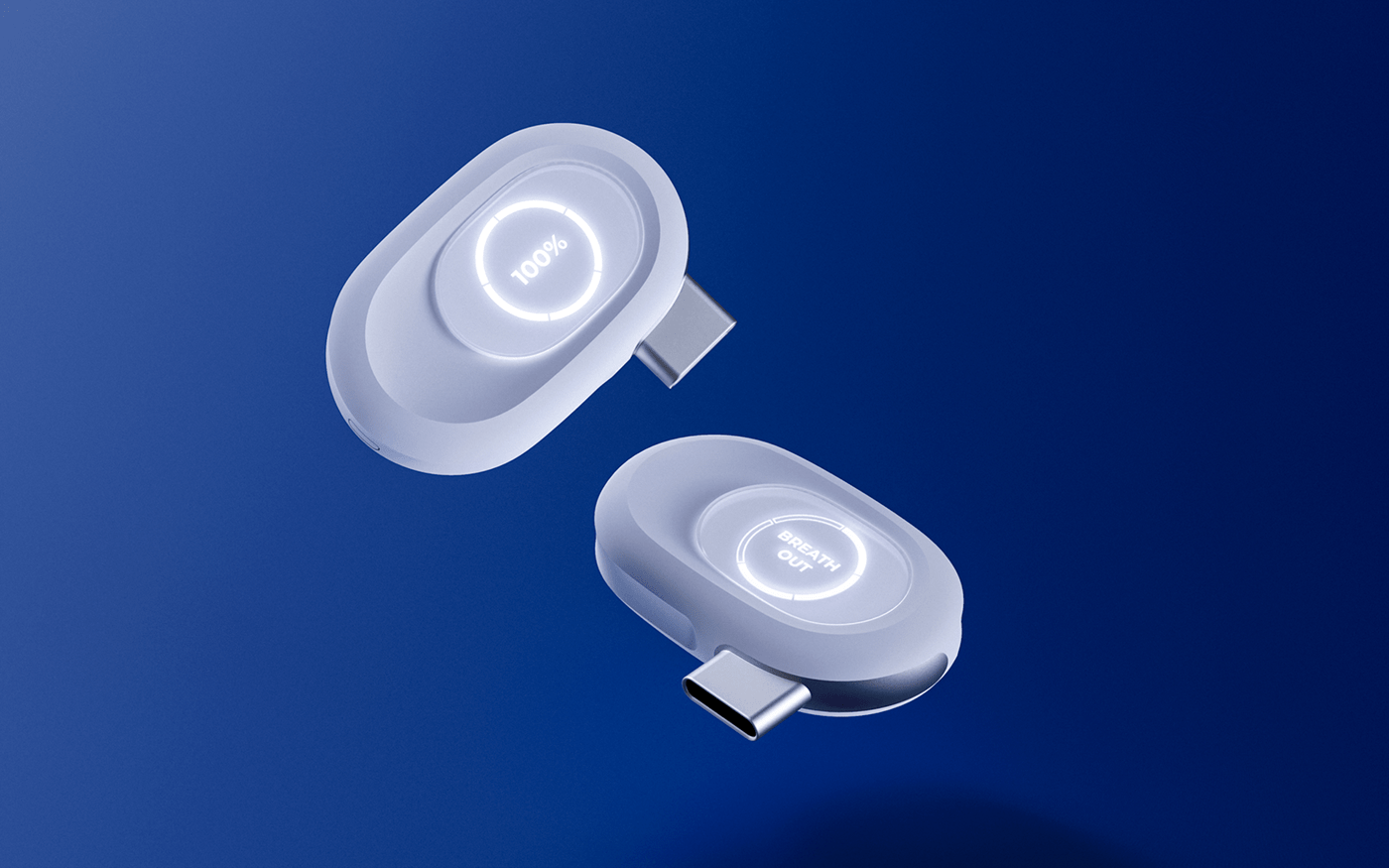






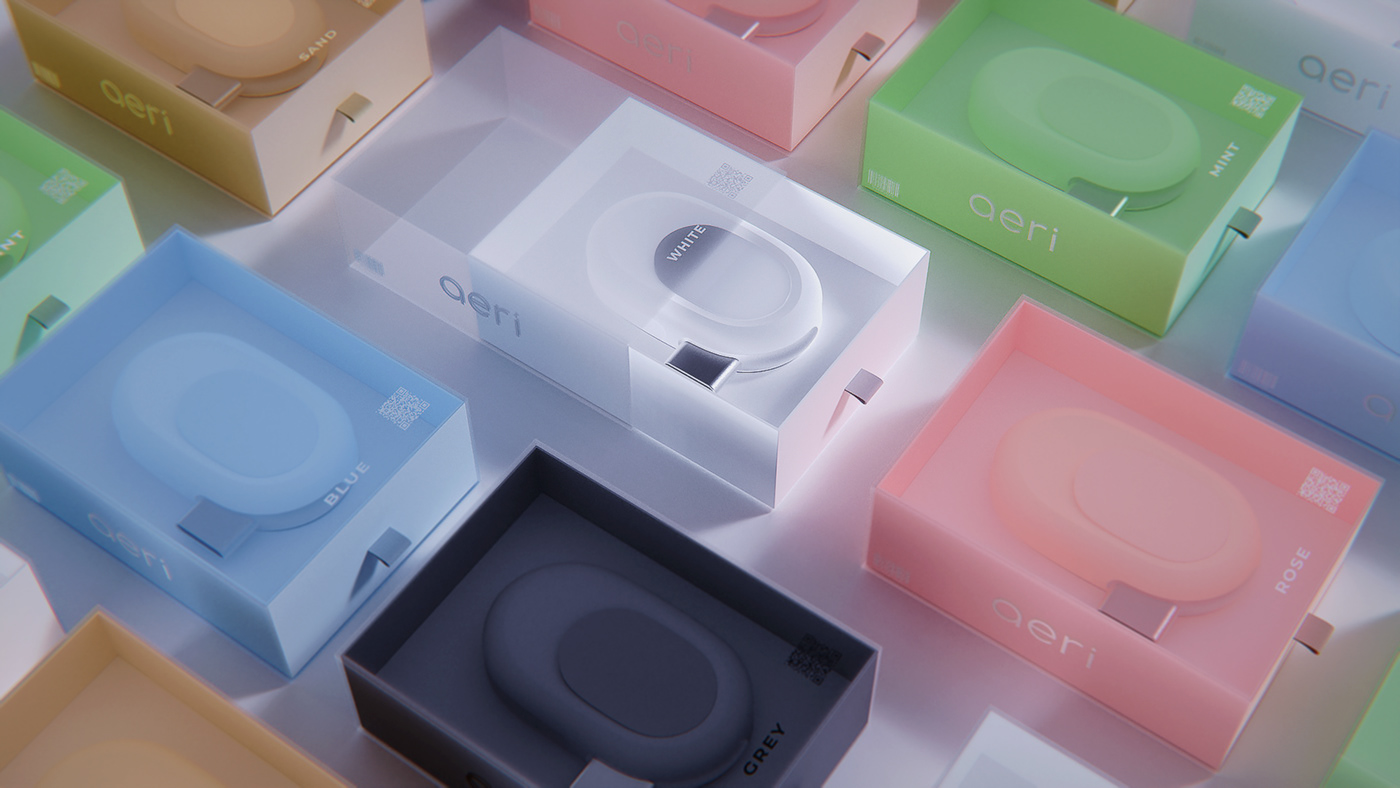






Model making
The models were built with different methods. The case parts as well as some mouthpieces were printed via SLA (stereolithography) and were then primed, sanded and painted in several steps. Afterwards, the surface got finished by attaching Rub-On logos and graphics.Two mouthpieces were made from metals according to medical standard. One of them was printed from chrome-cobalt powder using the SLM (selective laser melting) process, another mouthpiece was made from a pure titanium block milled with a 5-axis-CNC. After removing the support structure, the surface was reworked and polished.





